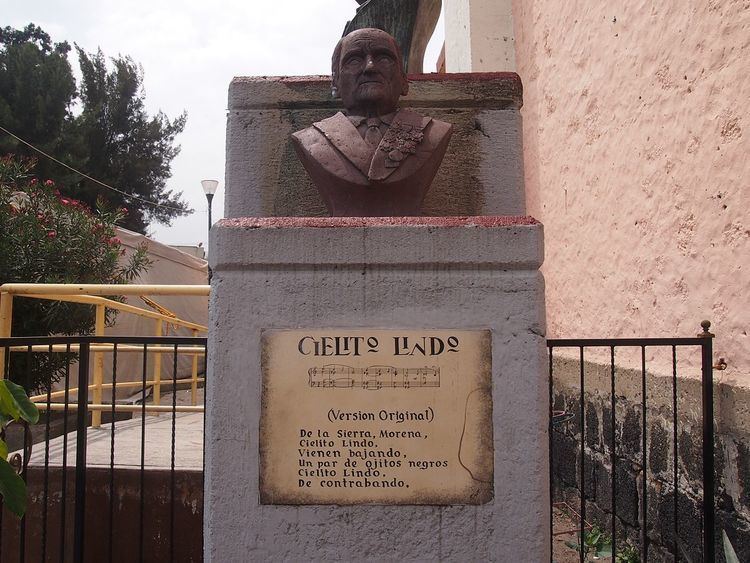 | ||
"Cielito lindo" is a popular Mexican song from a Spanish copla, popularized in 1882 by Mexican author Quirino Mendoza y Cortés (c. 1859–1957). It is roughly translated as "Lovely Sweet One". Although the word cielo means "sky" or "heaven", it is also a term of endearment comparable to sweetheart or honey. Cielito, the diminutive, can be translated as "sweetie"; lindo means "cute", "lovely" or "pretty". Sometimes the song is known by words from the refrain, "Canta y no llores" or simply the "Ay, Ay, Ay, Ay song".
Contents
Commonly played by mariachi bands, it has been recorded by many artists in the original Spanish as well as in English and other languages. It is debated if the song talks about the Sierra Morena, a mountain range in the south region of Spain, or the similarly named Sierra Morones in the Mexican state of Zacatecas. It has become a non-official symbol of Mexico, specially in Mexican expatriate communities around the world or for Mexicans attending international events such as the Olympic Games or the FIFA World Cup.
It has been sung by a plethora of artists, such as Tito Guizar, Pedro Infante, Placido Domingo, Luciano Pavarotti, Eartha Kitt, and Ana Gabriel. It was part of the iconic Mexican movie "Los Tres Garcia"
Lyrics
The scheme corresponds to the Spain Castilian classical stanza known as seguidilla, i.e. seven lines of alternating heptasyllabic and pentasyllabic verses. Lyrics vary widely from performer to performer and every singer is free to add some new verse to his or her own interpretation. Some of the most traditional lyrics are the following:
In the article "¡Hasta que me cayó el veinte!" Ortega discusses the origins of the first verse of this song. His research discovered that in the early 17th century, armed bandits would take refuge in the Sierra Morena mountains of Spain and that people feared for their lives when they had to travel through the region. The words of the first verse of "Cielito Lindo" were found in a song from that era, hinting at that fear. But with time the meaning of the verse changed as people began romanticizing it. "Your face is the Sierra Morena. Your eyes are thieves who live there." The verse had other melodies put to it and variations on the lyrics. Quirino Mendoza, the composer, adapted the verse to his own melody and gave us the song we know today.
Versions
The song has been subject to many versions:
Cielito lindo huasteco
"Cielito Lindo" should not be confused with another popular and traditional song called "Cielito lindo huasteco" also known as "Cielito lindo" from La Huasteca in Mexico. This song, distinctly different from the common version above, has been played by many conjuntos huastecos, as it is considered one of the most popular Son Huasteco or Huapango songs.
Sometimes mariachis perform both versions of "Cielito Lindo" and "Cielito lindo huasteco" which are completely different, thus creating some confusion about both.
